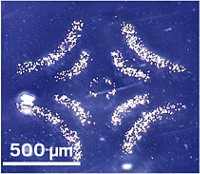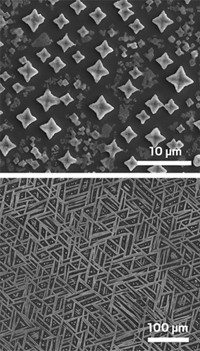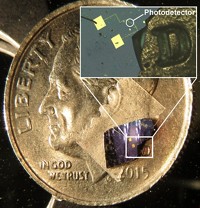Advertisement
Grab your lab coat. Let's get started
Welcome!
Welcome!
Create an account below to get 6 C&EN articles per month, receive newsletters and more - all free.
It seems this is your first time logging in online. Please enter the following information to continue.
As an ACS member you automatically get access to this site. All we need is few more details to create your reading experience.
Not you? Sign in with a different account.
Not you? Sign in with a different account.
ERROR 1
ERROR 1
ERROR 2
ERROR 2
ERROR 2
ERROR 2
ERROR 2
Password and Confirm password must match.
If you have an ACS member number, please enter it here so we can link this account to your membership. (optional)
ERROR 2
ACS values your privacy. By submitting your information, you are gaining access to C&EN and subscribing to our weekly newsletter. We use the information you provide to make your reading experience better, and we will never sell your data to third party members.
Materials
Slicing Nanowires Into Nanocrystal Arrays
Optoelectronics: Aligned arrays of nanoparticles could transmit light in optical circuits
by Prachi Patel
June 13, 2013

Researchers have sliced silver nanowires to make precise linear arrays of crystalline nanoparticles (J. Phys. Chem. Lett. 2013, DOI: 10.1021/jz400716j). Such arrays could form the basis of optical circuitry used in high-speed communications and quantum computers.
Aligned nanocrystals can trap light on their surfaces as particles called plasmons. These plasmons help transmit light from one end of an array of nanoparticles to another, says Alison M. Funston of Monash University in Australia. By guiding light as plasmons through these arrays, researchers think they can focus light signals into nanosized spaces without the light diffracting and losing information.
Unfortunately, it is difficult to precisely place crystalline nanoparticles in an array with controlled spacing and crystal size. Past efforts using lithography produced particles with ill-defined crystal structures and rough surfaces, making them inefficient at transporting light.
The Australian team tried another approach. They first synthesized crystalline silver nanowires and placed them on a glass slide. The scientists then cut the wire into separate nanoparticles using a focused ion beam. Because the nanowires are highly crystalline and have smooth surfaces, so do the resulting particles.
The researchers made arrays of more than 50 nanocrystals. The team now is testing how efficiently the arrays guide light.





Join the conversation
Contact the reporter
Submit a Letter to the Editor for publication
Engage with us on Twitter